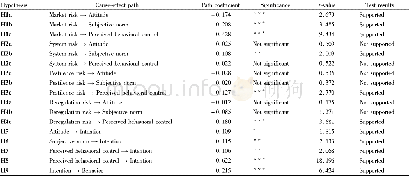《Table 1.Zhao Yiheng’s reception model》
 提示:宽带有限、当前游客访问压缩模式
提示:宽带有限、当前游客访问压缩模式
本系列图表出处文件名:随高清版一同展现
《A Semiotic Reading of Nicholas Jose's Avenue of Eternal Peace》
This paper offers a semiotic reading of Nicholas Jose’s novel Avenue of Eternal Peace.Before this textual analysis,it is necessary to explain how a semiotic approach works in transcultural writing.In his monograph Semiotics,Zhao Yiheng borrows the Greimasian semiotic square(see Figure 2)to show that there is a huge gray area between“the true”and“the false”in narratives which may lead to diversifi ed reception results.In Zhao’s semiotic square(see Figure 3),“S”signifi es the“truth”of the message;“~S”signifies the“falsehood”of the message;S 1 signifies that the addresser is“being”sincere;S2 signifi es that the addressee seems to accept the message;~S1 signifi es that the addresser is“not-being”sincere;~S2 signifi es that the addressee does not accept the message.Taking“the intention of the addresser”and“the reliability of the text”into consideration,Zhao analyzes eight reception models with fi ve successful reception results and three failed reception results3(see Table 1)(Zhao,2012,pp.258-278) .The three categories of failed reception include 3a) “fail to understand”,in which the addresser is sincere and the text is reliable,but the addressee fails to understand;3b) “message blocked”,in which the addresser is sincere but the text is unreliable and the addressee will not accept;3c) “ineffective deception”,in which the addresser is insincere and the text is reliable but the addressee is too smart to be deceived(2012,p.276).If we see the writer as“the addresser”and the reader as“the addressee”,the reception of Avenue in the 1990 can be classifi ed into category3b,“message blocked”.
| 图表编号 | XD0054194000 严禁用于非法目的 |
|---|---|
| 绘制时间 | |
| 作者 | Lili Zhang |
| 绘制单位 | Soochow University、Nantong University |
| 更多格式 | 高清、无水印(增值服务) |





